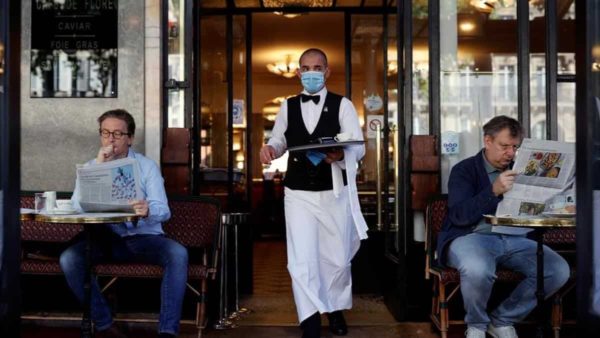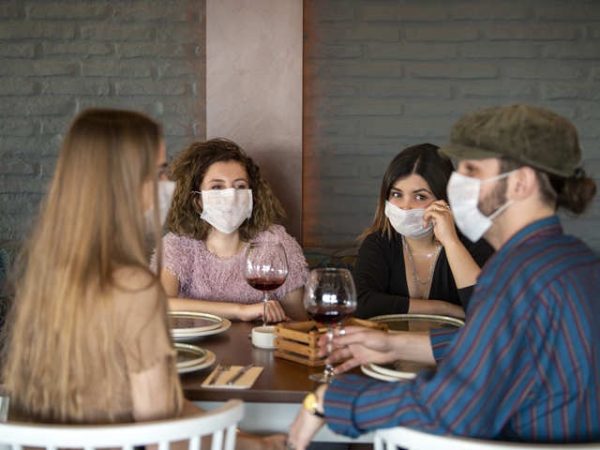The New York Times has stood as the standard bearer for food writing since Craig Claiborne took on the mantle of restaurant critic for the newspaper in 1957. In the ensuing years, the Times critic became a kingmaker—as restaurants boomed so did the critic’s power and influence. New York Times restaurant critics are revered like monarchs, an exclusive fraternity that is mostly male and entirely white.
Influential and iconic women like Ruth Reichl and Mimi Sheraton have graced the pages of the Dining section, but their tenures are dwarfed by the litany of men who’ve served since Claiborne, among them Bryan Miller, Frank Bruni, William Grimes, Sam Sifton, Pete Wells, and others. A person of color has never occupied the food critic’s chair in the history of the New York Times.
As the restaurant industry confronts the sins of its past, the food media struggles to come to terms with its role as an enabler. The Times’ standing as a culinary ombudsman—chronicling the intersection of food and culture—feels less surefooted in recent years. While other big city papers like the Los Angeles Times and the San Francisco Chronicle have deepened their commitment to diversity by adding critics like Patricia Escárcega and Soleil Ho, the Times has stayed the course.

Term limits for food critics make sense regardless of optics. No matter how good a writer is, the tyranny of one individual’s palate can be oppressive. But why would anyone willfully step down from one of the most prestigious jobs in media? After vacating the critic’s role, both William Grimes and Frank Bruni have continued their careers at the NYT in other capacities. Almost ten years at the helm, there must be a graceful exit strategy that would be mutually beneficial for Wells and his publishers.
In my two decades working in New York City restaurants, I can say, unequivocally, that a visit from the New York Times food critic is one of the most stressful experiences for a restaurant staff. Photos of Pete Wells are plastered on the kitchen walls of restaurants throughout the city to ensure that everyone, from the hostess to the dishwasher, will recognize him. His photo might as well be posted above the urinal in the employee bathroom, a constant reminder to everyone of his unilateral power.
Once a staff member identifies Wells (or any sitting critic), there are typically “code red” protocols that result in everything else going on in the restaurant grinding to a halt. Screwing up a random table can be remedied with giveaways, but mucking up Pete Wells’ meal would cause irreparable damage.
In his “Critic’s Notebook” this past week, Wells penned an essay arguing that restaurant workers deserve better treatment. His article cites a recent exposé on Eater written by Hannah Sellinger, a former employee of David Chang’s restaurant Momofuku Ko, that vilifies the work culture at Ko and alleges the staff fell victim to chronic abuse at the hands of Chef Chang. From the start, Wells tempers the impact of the damage, crediting Chang’s public admission of his abusive tendencies before these accusations came to light.
Aside from Sellinger’s dossier, Wells invests no time interviewing other victims that might have provided more texture to the dysfunction within Chang’s empire. He insists that guests deepen their concern for the people serving them, but in centering Chang’s redemption arc rather than the effects of his violence, Wells is guilty of the behavior he’s condemning. Without hearing from more of the victims, we’re left wondering if maybe the whole Momofuku situation wasn’t just blown out of proportion by overly-sensitive staff. It’s nothing new. All abused restaurant workers are accustomed to having their feelings dismissed by solipsistic chefs and megalomaniacal owners.
No matter how nasty Chang’s improprieties are, Wells insists on making him the protagonist of his own perversity, told in third person. “Until recently, when we heard stories like this,” Wells writes, “they were told by chefs. Screaming and pot-throwing were things they endured in their younger days, part of the dues they paid.” As a reader, we’re left waiting to hear Pete dish on the other side of the story, but his softball treatment of Chang makes him appear undeserving of a comeuppance.
Wells also ignores the duality that exists between critic and chef, having contributed like many others to the culture that glorifies “rockstar” chefs like Chang. Perpetuating the bad boy myth has added fuel to the fire. In the end, Wells’ essay feels like nothing more than pulling up the shades while it’s still dark outside.
New York City is a panoply of food cultures, and yet the Times only contextualizes its restaurants through a white lens. Are white critics better interpreters of how New Yorkers eat? Certainly not. It’s also safe to assume that blanketing food criticism in whiteness results in many non-Western flavors being misunderstood.
In 2018, the Times dispatched Tejal Rao to cover the emerging restaurant scene in Los Angeles. Wells rarely ventured beyond his jurisdiction but caused a stir the year before when he issued a scathing zero-star review to Roy Choi and Daniel Patterson’s fast casual chainlet, Locol.
Looking back on his review of Locol, Wells’ observations are condescending and look past the mission of the restaurant’s owners. Unimpressed with one of the restaurants $7 chili bowls, Wells writes, “Supermarkets sell canned chilis that are seasoned more persuasively.” For seven bucks, it seems like a stretch to expect food to be both delicious and persuasive. He praises the ambience within the space. “Before noon on a weekday,” he writes, “you could hear Snoop Dogg advertising the health-giving properties of gin and juice.” OK, boomer.
Compared to his fellow critics, Wells tries a little too hard to democratize fine dining. Although in a New Yorker profile from 2016, he described himself as “too comfortable in expensive restaurants to be a real populist.” Despite the job requiring him to evaluate so many fancy places, his body of work suggests he clearly prefers rustic over glamorous.

In Wells’ defense, he has consistently brought attention to restaurants on the fringe and included certain marginalized cuisines in the conversation that were ignored by his predecessors. But he doesn’t approach it with the unadulterated joy of Jonathan Gold. He famously bristled about other tables receiving favorable treatment at Daniel while he was there to review it (he even sent in decoys to validate his theory). His decision to revoke a star seemed punitive and petty.
The same was true when he skewered the waitstaff of Per Se for neglecting to pick up and replace his guest’s fallen napkin. Whether intentional or not, his distaste for complacency in established restaurants often comes across as entitlement, or perhaps, if we look further beneath the surface, a symptom of white privilege. History suggests that white critics have a tendency to favor Eurocentric culinary traditions and anglicized hospitality standards.
Earlier this week, Korsha Wilson reported for the Times on the dearth of opportunities for female Black chefs in high-end restaurants. Though she doesn’t explicitly say so, it’s easy draw a direct line between the enduring whiteness of NYT critics and the barriers to proper recognition for Black chefs. Earlier this year, the James Beard Foundation was forced to publicly confront discrimination in its annual awards, cancelling plans to broadcast this year’s event remotely after no Black chefs were among this year’s honorees.
In 2018, Chef Eduardo Jordan of June Baby in Seattle was the first Black chef in twenty years to receive a three-star review from the New York Times, issued by Wells. A Black chef has never been awarded four stars by any NYT food critic. With a few exceptions, every four-star review issued by the Times has been awarded to fine dining French restaurants or upscale American restaurants anchored in French technique.
Wells may share in the blame for these structural failures, but none of this should detract from his prowess as a writer nor his strength of character. But admiring him or his work doesn’t mean he’s the right person for the job at this moment in history.
A recent thread on Twitter by a close associate of Danny Bowien describes Wells’ relationship with the chef as too cozy to be objective. This is consistent with the chumminess with David Chang that’s described in Wells’ New Yorker profile. A truly incorruptible critic shouldn’t behave like a football referee giving the star player a friendly pat on the tush every time he makes a nice play.
The New York Times has a responsibility to its readers to reflect the diversity of the community. Providing resources to non-Caucasian food critics would likely broaden the culinary horizons of its audience and increase the likelihood that BIPOC chefs are properly recognized to attract potential investors.
The pandemic presents an opportunity for the perfect coda to Wells’ stewardship of the critic’s desk. He can walk away from the game like a decorated athlete in his prime. If he chooses to stay, it’s difficult to imagine that the calls for diversity will deafen over time. Leaving now would also make a bold statement that he recognizes how his own open-ended employment is an impediment to any diversity initiatives the NYT administration may implement now or in the future.
There is no shortage of qualified Black and Latinx candidates in food media worthy of a bigger platform. When the pandemic finally subsides, the public will need help navigating a dramatically altered dining landscape. The restaurant industry will need critics to be true advocates, not just sycophants for the Thomas Kellers, Eric Riperts, and Daniel Bouluds of the world. There couldn’t be a better time for Pete Wells to relinquish his seat. Yes, even the New York Times needs to turn tables.




